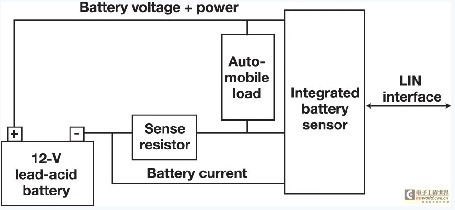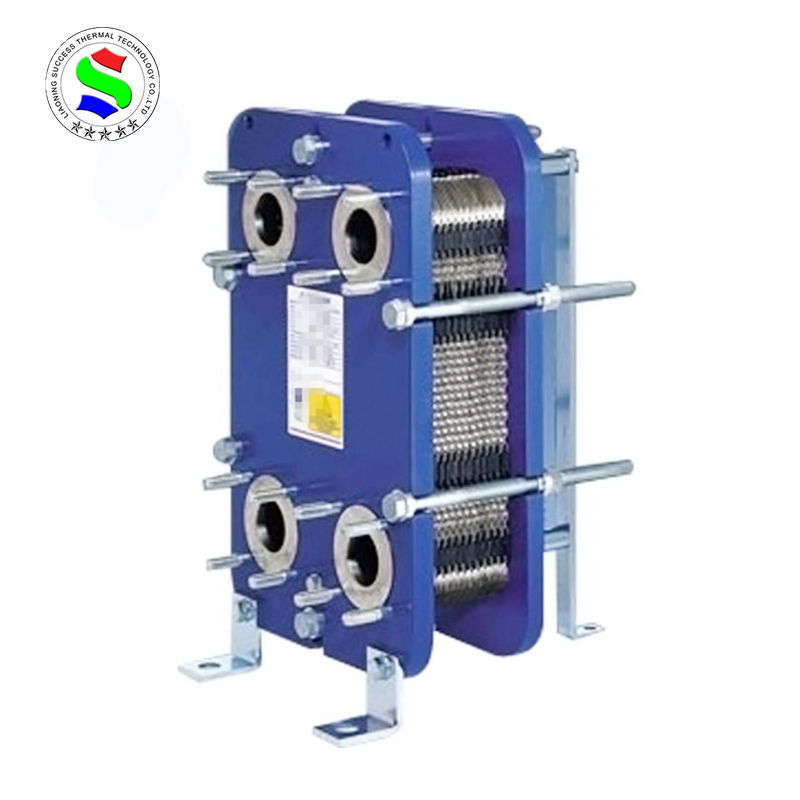In order to reduce the fault, it is necessary to accurately detect the voltage, current and temperature of the battery, pre-process the result, calculate the state of charge and the operating state, send the result to the engine control unit (ECU), and control the charging function. Hyundai was born in the early 20th century. The first car relied on manual starting, which required a lot of power and was at high risk. The car's "hand crank" caused many fatalities. In 1902, the first battery starter motor was successfully developed. By 1920, all cars had been electrically activated. The dry battery was originally used and must be replaced when the power is exhausted. Soon after, the liquid battery (the old lead-acid battery) replaced the dry battery. The advantage of a lead-acid battery is that it can be charged while the engine is running. In the last century, there was almost no change in lead-acid batteries, and the last major improvement was to seal them. What really changed was the need for it. Initially, the battery was only used to start the car, honk the horn and power the lights. Today, all electrical systems of a car are powered by it before ignition. The proliferation of new electronic devices is more than just consumer electronics such as GPS and DVD players. Today, body electronics such as engine control units (ECUs), power windows and power seats are standard on many basic models. The exponentially increasing load has had a serious impact, as evidenced by the increasing number of failures caused by electrical systems. According to ADAC and RAC statistics, almost 36% of all vehicle failures are attributable to electrical failures. If this number is analyzed, it can be found that more than 50% of the faults are caused by this component of the lead-acid battery. Assessing the health of a battery The following two key characteristics can reflect the health of a lead-acid battery: (1) State of charge (SoC): The SoC indicates how much charge the battery can provide, expressed as a percentage of the battery's rated capacity (ie, the SoC of the new battery). (2) Operating status (SoH): SoH indicates how much charge the battery can store. The state of charge state of charge is like the "fuel gauge" of the battery. There are many ways to calculate SoC, two of which are most commonly used: open circuit voltage measurement and coulomb measurement (also known as coulomb counting). (1) Open circuit voltage (VOC) measurement method: The open circuit voltage of the battery at no load is linear with its state of charge. There are two basic limitations to this calculation: first, in order to calculate the SoC, the battery must be open and not connected to the load; second, the measurement is accurate only after a fairly long period of stability. These limitations make the VOC method unsuitable for online computing SoCs. This method is usually used in an automobile repair shop where the battery is removed and a voltage meter can be used to measure the voltage between the positive and negative terminals of the battery. (2) Coulomb assay: This method uses the coulomb count to obtain the integral of the current versus time to determine the SoC. With this method, the SoC can be calculated in real time even if the battery is under load. However, the error of the coulomb assay increases over time. Generally, the open circuit voltage and the coulomb counting method are used to calculate the state of charge of the battery. The operating state of the operating state reflects the general state of the battery and its ability to store charge compared to new batteries. Due to the nature of the battery itself, SoH calculations are very complex and rely on an understanding of the battery's chemical composition and environment. The SoH of a battery is affected by many factors, including charge acceptance, internal impedance, voltage, self-discharge, and temperature. It is generally considered difficult to measure these factors in real time in an environment such as a car. During the start-up phase (engine start), the battery is under maximum load, which best reflects the SoH of the battery. The SoC and SoH calculation methods actually used by leading automotive battery sensor developers such as Bosch and Hella are highly confidential and often protected by patents. As owners of intellectual property, they often work closely with battery manufacturers like Varta and Moll to develop these algorithms. Figure 1 shows a discrete circuit commonly used for battery testing. Figure 1. Discrete battery detection solution The circuit can be divided into three parts: (1) Battery test The battery voltage is detected by a resistive attenuator that taps directly from the positive terminal of the battery. To sense the current, a sense resistor (typically 100mΩ for 12V applications) is placed between the negative terminal of the battery and ground. In this configuration, the metal chassis of the car is typically ground and the sense resistor is mounted in the current loop of the battery. In other configurations, the negative pole of the battery is ground. For SoH calculations, the temperature of the battery must also be checked. (2) The microcontroller microcontroller or MCU performs two main tasks. The first task is to process the results of an analog-to-digital converter (ADC). This work can be as simple as performing basic filtering only, or it can be complicated, such as calculating SoC and SoH. The actual functionality depends on the processing power of the MCU and the needs of the car manufacturer. The second task is to send the processed data to the ECU via the communication interface. (3) Communication Interface Currently, the Local Interconnect Network (LIN) interface is the most common communication interface between the battery sensor and the ECU. LIN is a single-line, low-cost alternative to the well-known CAN protocol. This is the simplest configuration for battery testing. However, most precision battery detection algorithms require simultaneous sampling of battery voltage and current, or battery voltage, current, and temperature. In order to perform simultaneous sampling, it is necessary to add up to two analog-to-digital converters. In addition, the ADC and MCU need to regulate the power supply for proper operation, resulting in increased circuit complexity. This has been addressed by the LIN transceiver manufacturer by integrating the regulated power supply. The next step in automotive precision battery testing is the integration of ADCs, MCUs, and LIN transceivers, such as Analog Devices' ADuC703x family of precision analog microcontrollers. The ADuC703x provides two or three 8 ksps, 16-bit sigma-delta ADCs, a 20.48MHz ARM7TDMI MCU, and an integrated LIN v2.0-compatible transceiver. The ADuC703x series integrates a low dropout regulator on-chip that can be powered directly from a lead-acid battery. To meet the needs of automotive battery testing, the front end includes the following devices: a voltage attenuator for monitoring battery voltage; and a programmable gain amplifier that, when used with a 100mΩ resistor, supports measuring full-scale currents up to 1A to 1500A; Controller, supports coulomb counting without software monitoring; and an on-chip temperature sensor. Figure 2 shows the solution using this integrated device. Figure 2. Solution example with integrated device A few years ago, only high-end cars were equipped with battery sensors. Today, there are more and more mid- to low-end cars with small electronic devices installed, which were only seen in high-end models a decade ago. The number of faults caused by lead-acid batteries is therefore increasing. In less than a few years, each car will be equipped with a battery sensor, reducing the risk of failure of an increasing number of electronic devices. A heat exchanger is a device designed to efficiently transfer or "exchange" heat from one matter to another. When a fluid is used to transfer heat, the fluid could be a liquid, such as water or oil, or could be moving air. The most well known type of heat exchanger is a car radiator. In a radiator, a solution of water and ethylene glycol, also known as antifreeze, transfers heat from the engine to the radiator and then from the radiator to the ambient air flowing through it. This process helps to keep a car's engine from overheating. Similarly, our heat exchangers are designed to remove excess heat from aircraft engines, optics, x-ray tubes, lasers, power supplies, military equipment, and many other types of equipment that require cooling beyond what air-cooled heat sinks can provide.
Another type of heat exchanger is a plate-fin heat exchanger, which can provide air-to-air, air-to-liquid, liquid-to-air, or liquid-to-liquid cooling. Plate-fin heat exchangers consist of finned chambers separated by flat plates and are circuited in alternating hot and cold fluid passages. Heat is transferred via fins in the passageways, through the separator plate, and into the cold fluid via the separator plate, and into the cold fluid via fin once again. The heat exchanger also has manifold ducting, mounting brackets, and a frame.
Air To Water Heat Exchanger,Heat Exchanger,Commercial Plate Heat Exchanger,Heat Exchanger Unit Liaoning LotusNine International Trade co.,ltd , https://www.lj-heatexchangers.com

There are various types of heat exchangers. our heat exchangers provide air-to-liquid cooling, liquid-to-air cooling, liquid-to-liquid cooling, or air-to-air cooling. With air-to-liquid cooling, heat is transferred from the air to a liquid. One example of air-to-liquid cooling is cabinet cooling. With liquid-to-air cooling, the heat is transferred from the liquid to the air. This type of cooling is generally used to cool process fluids. Liquid-to-liquid cooling is also used to cool process fluids, but the heat is removed by another liquid instead of by air. Lastly, with air-to-air cooling, heat is transferred from one air or gas stream to another.
we has been manufacturing one of the most widely used heat exchanger technologies, tube and fin heat exchangers, for more than 20 years. Tube and fin heat exchangers provide air-to-liquid cooling or liquid-to-air cooling. They consist of fin, hairpin tubes, return bends to connect the hairpins, a tube sheet to support and properly align the tubes, a header with inlets and outlets, side plates for structural support, and usually a fan plate. The tubes provide the path for the liquid coolant, and the fin adds surface area for more heat convection. Copper is often selected for tube and fin material due to its excellent thermal conductivity and compatibility with water and ethylene glycol solutions. However, stainless steel is used for tube and fin when it's necessary for the coolant to be deionized water or other corrosive fluids.
ourо oil cooler flat tube heat exchangers also have tubes and fin; however, the tubes are flat instead of round. This helps to minimize pressure drop when oil or ethylene glycol is used as the coolant. The surface area of the flat tubes is also much greater than the surface area of the tubes in a tube and fin heat exchanger. The additional surface area of the tubes in an oil cooler flat tube heat exchanger maximizes heat transfer when poor heat transfer fluids like oil or ethylene glycol are used. These oil cooler heat exchangers consist of fin, flat tubes, a welded header with inlets and outlets, and plates, including an optional fan plate.

One out of every five car failures is caused by batteries. In the next few years, this problem will become more and more serious with the popularity of telex, the launch/extinguish engine management and the hybridization of hybrid (electric/gas) technologies.
June 17, 2021